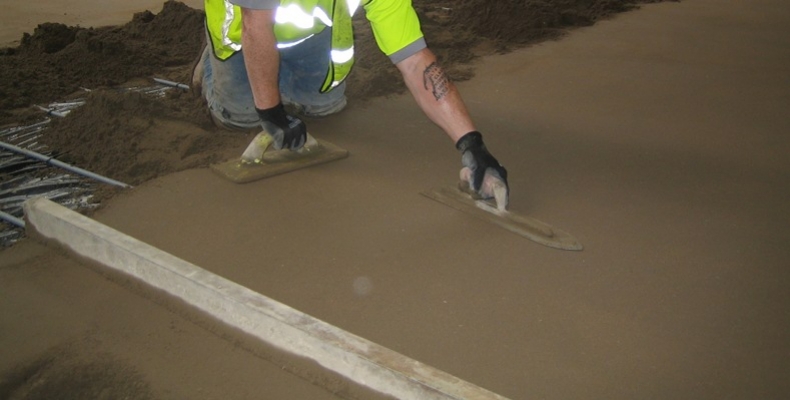12
Feb 2020
The process of laying a level floor with JCW
Before you can fit a new floor, there’s one key factor that’s essential to get right – your subfloor needs to be level. But relax, here at JCW, we are experienced floor screeders and can save you the time and hassle of preparing a level floor yourself.
Screeding a floor is the process of laying a material that will smooth out an uneven surface – ready for a floor finish of your choice. As straightforward as it may seem, floor screeding isn’t the easiest thing to get right, which is why we recommend you leave it to the experts.
At JCW, we only supply quality floor screeds – providing you with the best possible results. Choose from:
- Fibre reinforced sand and cement floor screed
- Higher strength sand and cement floor screed
- Quick drying sand and cement floor screed
The process of laying a screed floor in 5 simple steps:
- Arrange a site visit
The first thing we’ll do is come and visit your site at a time that works best for you. This allows our screeders to accurately measure the flooring area and calculate how much screed will be required. We can then provide you with a detailed quote for the work in hand.
- Prepare the subfloor
A screeded floor is only as good as what’s underneath it. It may be that high spots need sanding down with an electric sander, or it needs a thorough clean to remove remaining dust and debris. We’ll make sure that the subfloor is ready to accept the screed before we start.
- Lay floor screed
As soon as the mix and framework are ready, we’ll start at the furthest point away from the door and work our way towards it. We’ll complete the section in front of the entrance last. By the time the screed has been poured over the floor, it will have set enough to complete by hand. Our screeders will smooth out any inconsistencies using a hand trowel – focusing on lumps and contours.
- Leave the screed to dry
Our quick-drying floor screed will harden faster than any other floor screed, typically only taking several hours to cure. Although, for the best results, we recommend leaving it to dry overnight and advise only light foot traffic for the first 48-hours.
Factors, such as the weather conditions and temperature can also affect the curing time but our experienced screed teams will be able to give you more guidance on the day.
- Apply the final floor finish
After the floor screed has dried out completely, you’re ready to apply the final floor finish – safe in the knowledge that it’s going down on a great (and level!) base.
Contact JCW Floor Screeding
Rapid turnaround times are a given when working with JCW and our experts can provide a flexible solution for all project scales. We even work weekends and evenings to meet tight deadlines.
If sloping floors are a problem at your home or business, drop us an email at estimating@jcwgroup.co.uk or give us a call on 01204 387 029 and we’ll do everything we can to help.
Frequently Asked Questions
If your floors aren’t level or bumps and cracks have started to form, it’s worth considering having your floor screeded.
Though screed is not as strong as the concrete subfloor it covers, it can effectively increase the floor’s durability and improve its appearance, too.
Floor screeding can eliminate any irregularities in the subfloor before your final floor covering is applied, whether it be laminate, tiles, vinyl, carpet, or stone.
If you have the luxury of underfloor heating in your home or business, we can apply a thin layer of floor screed over the top of your UFH pipes to ensure heat is distributed evenly throughout the room. This not only means that you won’t need to worry about there being any hot or cold spots, but it could save you money on your energy bills as well.
To find out more about our floor screeding services and how you can benefit, give us a call on 01204 387 029.
Preparation is key if you’re having your floor screeded, and the best bit is, it couldn’t be any more straightforward.
Using either a dustpan and brush or your hoover, you’ll need to remove any dust, dirt, and debris from the subfloor to allow the cementitious mixture to settle and provide a smooth, bump-free finish.
We will then make sure that your subfloor is ready for the screed to be applied and take care of every other aspect – meaning you can sit back and relax.
To find out more about the process of floor screeding and what you can do to ensure optimal results are achieved, please get in touch today.
The cost of floor screeding can vary depending on numerous factors.
However, here at JCW, we’ll arrange for a member of our team to visit your property and assess the scale of the job in full.
By arranging a site visit, we can double-check that your room measurements are 100% accurate to calculate how much screed will be required.
Once we’ve done that, we can offer a detailed quote for floor screeding (including a clear breakdown of our costs to ensure no hidden fees!), along with an accurate timescale.
To get the ball rolling, why not call 01204 387 029? We can arrange a site survey for a time that’s most convenient for you.
Here at JCW, we understand that no two projects are the same and there may come a time when you need to hire floor screeding contractors at short notice.
The good news is that our screed teams pride themselves on offering quick turnaround times – ensuring floors are screeded safely, on time, and within budget.
Though it depends on how busy we are, we can usually be on site within 24-48 hours to get started on screeding your floor. We’re also willing to work through the night and on weekends to ensure deadlines are met.
If you’d like to employ the expertise of our qualified screeders, please give us a call or send an email to estimating@jcwgroup.co.uk and we’ll get back in touch as soon as possible.


